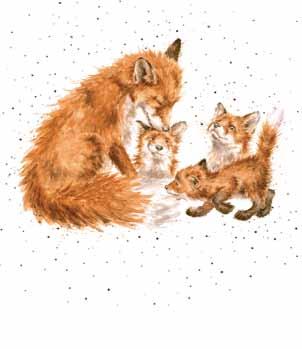
5 minute read
Born to be Wild
Aglorious celebration of the unique bond between parent and child throughout the natural world from award-winning illustrator Hannah Dale.
Red Fox
Advertisement
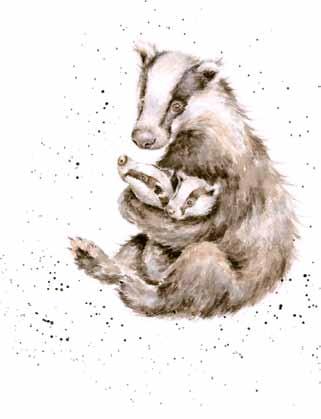
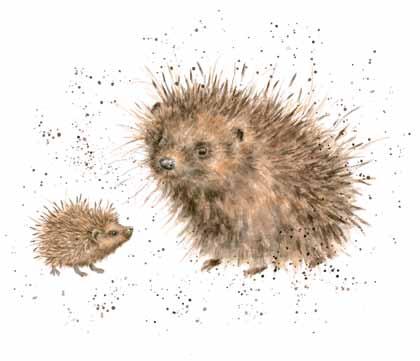
Vulpes vulpes
The beautiful red fox with its distinctive russet colouring is thought to be the most successful and widespread wild carnivore in the world, occurring across the entire northern hemisphere. Foxes produce a single litter each year, usually with four to six cubs, although the largest litters can contain up to 13 young. To raise a new family of fox cubs successfully it takes two, so both mum and dad are involved in the early days. Blind and dependent on their parents, the cubs spend the first two weeks of their lives in their den with the vixen, while the male or ‘dog’ brings them food. At five weeks they have taken their first exploratory steps out into the world, and by ten weeks they are fully weaned. The growing cubs will remain with their mother until they are around ten months old, when they are fully mature, and will begin looking for territories and mates of their own.
Badger
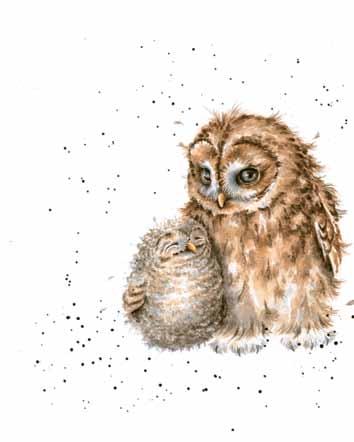
Meles meles
Badgers live in complex social groups, usually consisting of around five adults. They can be found throughout Europe and some parts of western Asia. However, it is not always ‘happy families’ among the sett-mates, and squabbling to assert superiority is common throughout the year. This is an important part of their social behaviour, as only the dominant females will be allowed to successfully raise a litter of cubs. In spring and summer, badgers are hard at work excavating and expanding their setts, creating new nesting chambers. A sett can be used by many generations of badgers, and it is not entirely clear why they continue to add extensions. The cubs are born blind with a covering of silky grey fur, but the distinctive stripes are already visible. They first emerge from their nursery at around four to five weeks, but won’t be fully weaned until up to the age of five months. Badger cubs are very playful, and can often be spotted around their sett at dusk, learning the skills they will need as adults.
Strix aluco
The original ‘wise owl’, tawny owls are also famous for their loyalty, with breeding pairs mating for life. A woodland bird occurring in much of Europe and western Asia and parts of North Africa, tawny owls are extremely territorial. When it comes to breeding, the female selects her nesting site – usually a natural hole, or a nesting box in a tree. She lays a clutch of almost perfectly round, pure white eggs and begins the task of incubating them. While she keeps her eggs warm, the male assumes the role of provider, bringing her food while she is unable to hunt. This continues after the eggs have hatched, until the chicks are around six or seven days old when she will occasionally leave them to hunt. The young are finally ready to fledge at just over a month old, but they will still be dependent on their parents for food until they are at least three months old. At this point, they must leave and find a territory of their own – it can be a perilous time for young tawny owls and some will starve before they manage to find their own hunting ground.
Hedgehog
Erinaceus europaeus
The hedgehog as we know it has been around for 15 million years, but its numbers are now in steep decline, as we reduce its habitat and make life more hazardous for these prickly little hogs. Between May and July, throughout western and some parts of northern Europe, hedgehogs give birth to between four and seven babies in a hidden den. The hoglets are raised by their mother after being born blind and with their first set of spines covered by a membrane. They will remain in the den for around six weeks as their spines develop, being fed by mum during the day as she goes out to hunt at night. When they emerge into the outside world, they remain with their mother for a short while, learning to hunt for tasty insects and worms, before quickly becoming fully independent.
Song Thrush
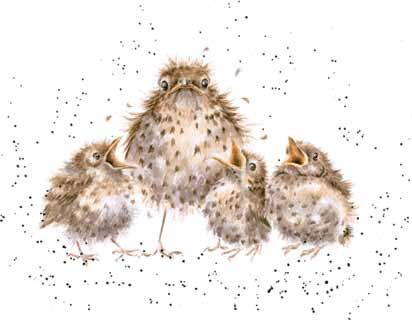
Turdus philomelos
The breeding season for song thrushes is initiated by changes in the weather – cold weather can delay it, while warmer weather may bring it forward. Its range extends from western Europe across into central Asia. It is the female that does all of the hard work of building a nest – it can take her up to three weeks and she will pick any spot among tree branches, shrubs or ground vegetation that offers shelter and cover. The nest is made from twigs and leaves and then is lined with a thick layer of mud, dung and even rotten wood. She lays a clutch of up to five eggs and begins to incubate them when they are all laid. They will hatch around two weeks later when dad steps in to help feed the chicks until they are old enough to fledge, at which time the female starts to prepare for the next brood, and dad is left in sole charge of the fledglings.
Osprey
Pandion haliaetus
Found across the globe, ospreys are loyal and devoted birds, remaining faithful to one mate for life. Together they build a large nest, or eyrie, from twigs and branches lined with moss and grass, and will often return to the same nest year after year – some nest sites are known to have been used for more than 20 years. The female lays up to three eggs and they will hatch a few days apart. Unlike some other birds of prey, the chicks show no aggression to one another, but if food is scarce the older chick is the most likely to survive; if the chicks were born at the same time, in lean times the ospreys would be more likely to lose the whole brood. The division of labour is clearly defined, with the mother being responsible for incubating and brooding the young chicks, while the male hunts and feeds his young family.
Celebrating new life for vulnerable wildlife by Hannah Dale is published by Batsford. Illustrations by Hannah Dale.
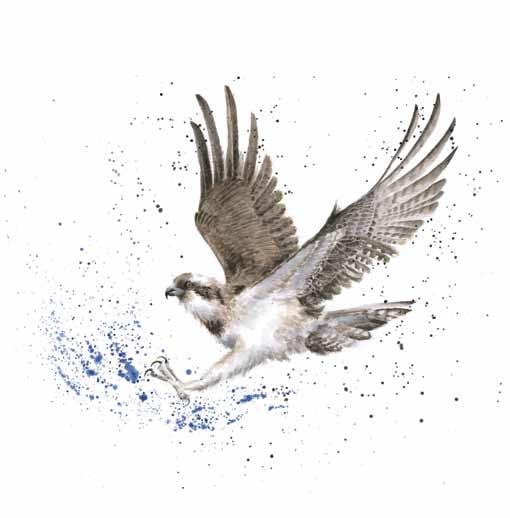
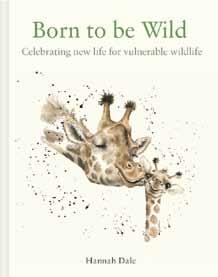
READER GIVEAWAY
We are delighted that we have 10 copies of the book to giveaway to readers. For a chance to win a copy, please email info@amramedia.co.uk quoting BTBW. Or send your details in to Amra Media Solutions, Marash House, 2/5 Brook Street, Tring, Herts, HP23 5ED.









